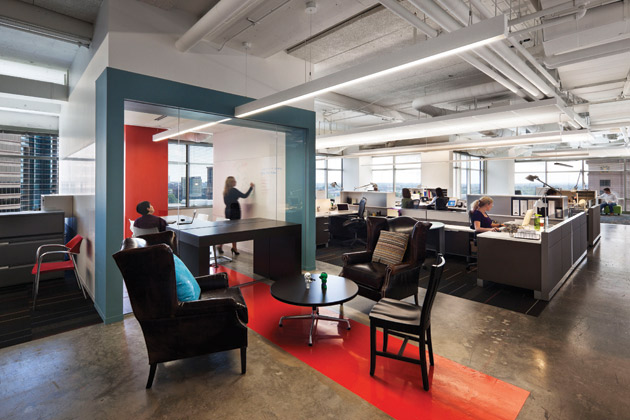Has your company followed Facebook, Google, Yahoo, eBay and American Express in creating an open office plan? Many companies, especially tech companies and startups have removed cubical walls and replaced them with communal desks to boost creativity, communication and collaboration. Additionally, an open office plan can save a company on office space expenditures, cutting the amount of space needed per employee and saving on cubical purchases, as well as convey an image of efficiency and innovation. However, could an open office actually be hurting employee productivity?
Sharing spaces with a chatty Cathy, an incessant coffee slurper and having the constantly prying eyes of co-workers may do more damage to productivity than is worth the monetary savings and Silicon Valley-esc image. A study by the University of Sydney, which polled 42,000 employees in 303 different work spaces, determined open office setups were “disruptive to productivity” as a result of a lack of privacy and increased noise level. A separate study found that employees in open offices are more likely to take sick leave than those who have their own office.
So what can your company do to make an open office plan work for everyone?
- Know the personalities of your employees and job function – An open office may be a good fit for those with extroverted, laid-back personalities or individuals in specific types of departments like design or sales. However, see our next point for introverts, individuals easily distracted or personalities that need quiet for work…
- Provide private rooms: Whether meeting rooms or thinking spaces, it’s important to provide an appropriate number of quite, private spaces for those individuals or projects that require more concentration.
- Emphasize workplace etiquette: Keep noise (and smell) to a minimum, don’t come to work sick, be respectful of other’s spaces. Allow employees to highlight hot button issues and use those to create a guide to workplace etiquette in order to decrease open office nuisances and promote the intended collaboration and creativity.
- Encourage a “virtual wall”: Promote those who need help focusing to bring in headphones and make it known as workplace etiquette to not interrupt those wearing headphones but to rather come back or send an email. This will provide employees with a way to signal other employees they need privacy and are hard at work.
- Offer flexible working hours: Offering for employees to flex their start and end times around core hours will allow employee with a job or project that requires concentration to work hours when the office may be less busy and less noisy.
- Allow for remote working: Provide employees with increased flexibility to work remotely when the job and/or project allows. However, make sure to read our blog on remote work pitfalls to set up a system that works for both company and employee.

